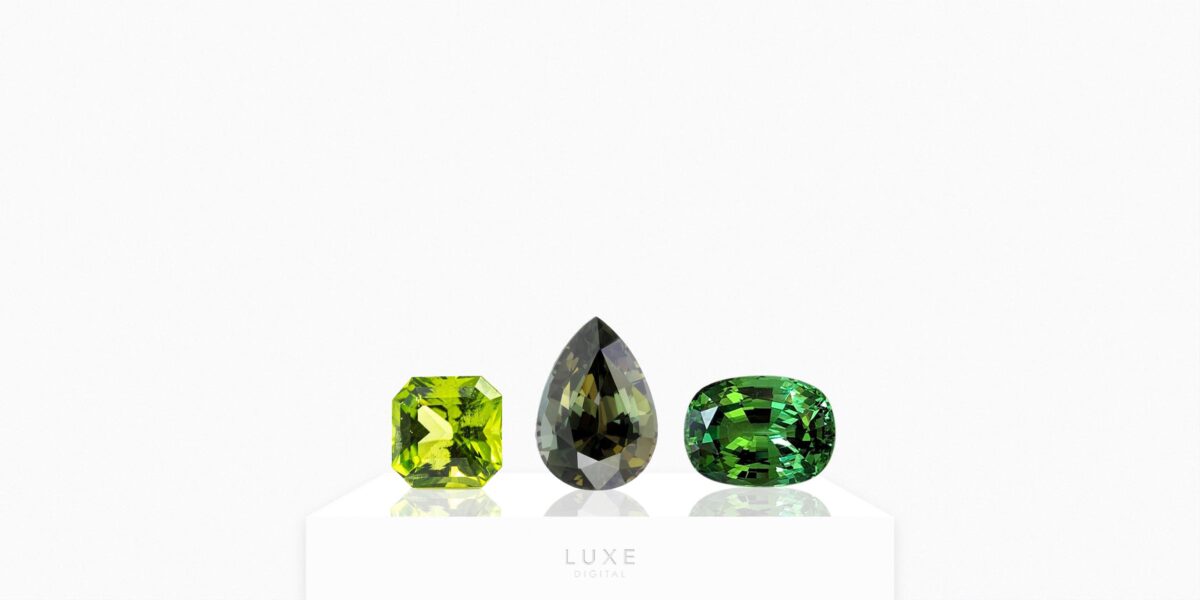Abundance, success and fortune: green gemstones have enchanted us for centuries. From the mythical lore of emeralds to dazzling but rare tsavorite, green gems are some of the most coveted, precious and stunning gems in the world.
Green gemstones, especially fine ones like green diamonds, are being featured by some of the best jewelry brands in breathtaking ways. From cocktail rings to drop earrings and charm bracelets, a green gemstone is a way to make an entrance and add unexpected flare. But even more affordable green gems, like jade, are a favorite among collectors. Green gems bring forth much of the charm of the best yellow gemstones, but with a touch of evergreen, signature elegance.
It’s time to unpack this list of 33 green gemstones, from A(lexandrite) to Z(oiste). Discover the meaning behind each of these green gems. You never know, it may even help you complete your next crossword puzzle.
- Alexandrite Cat’s Eye
- Aventurine
- Bloodstone
- Chrome Diopside
- Chrysocolla
- Chrysoprase
- Ekanite
- Emerald
- Gaspeite
- Green Amethyst
- Green Apatite
- Green Chrysoberyl
- Green Diamond
- Green Garnet
- Green Sapphire
- Green Zircon
- Hiddenite
- Idocrase
- Jade
- Kornerupine
- Malachite
- Maw Sit Sit
- Moldavite
- Peridot
- Prehnite
- Seraphinite
- Serpentine
- Sunstone
- Tourmaline- Verdelite, Chrome and Watermelon
- Tsavorite
- Turquoise
- Variscite
- Zoisite
Alexandrite Cat’s Eye
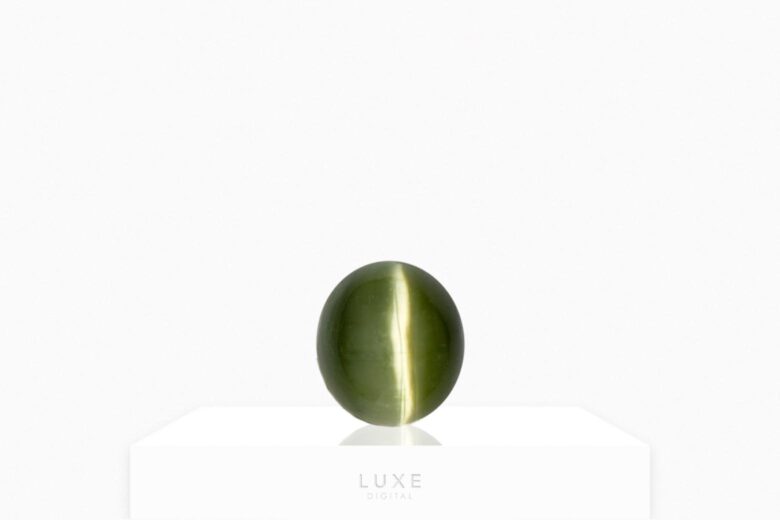
Alexandrite Cat’s Eye is an unusual type of chrysoberyl with an alluring play with light. Like all forms of Alexandrite, this unique gem can change color under different conditions. But it also exhibits a luminous streak of light, making its identification one of the easiest of all green gemstones. From pale green to forest green, this gemstone is mined in Sri Lanka, Russia, Burma, Brazil, India and Madagascar.
Benefits and Use
This green gemstone’s meaning lies in its mystical healing powers. It’s used to heal eye problems, improve blood sugar levels, and ease psychological distress.
| Mohs Hardness Score: | 8.5; durable enough for regular wear, but mostly used for collecting. |
| Price: | $$ to $$$ |
Aventurine
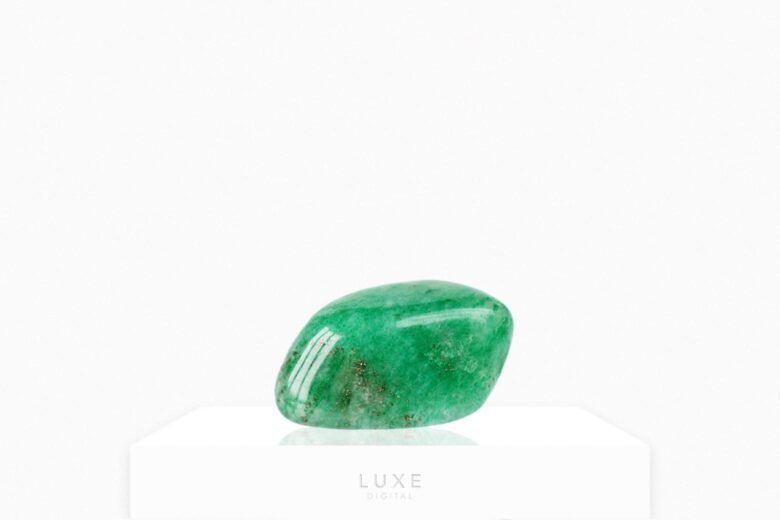
Aventurine is a type of quartz, yet its translucent appearance and glimmering surface make it distinguishable from other quartz, like rutilated quartz. Most recognizable in its pale to medium green colors, aventurine has mineral vein-like inclusions in cream to toffee. Although quartz is quite common, most green aventurine is sourced from India.
Benefits and Use
Aventurine supports the thymus gland and nervous system, as well as alleviates anxiety. It’s also worn as a pendant to ease sinus pressure and allergies.
| Mohs Hardness Score: | 6.5 to 7; suitable for collecting, occasional wear. |
| Price: | $ |
Bloodstone
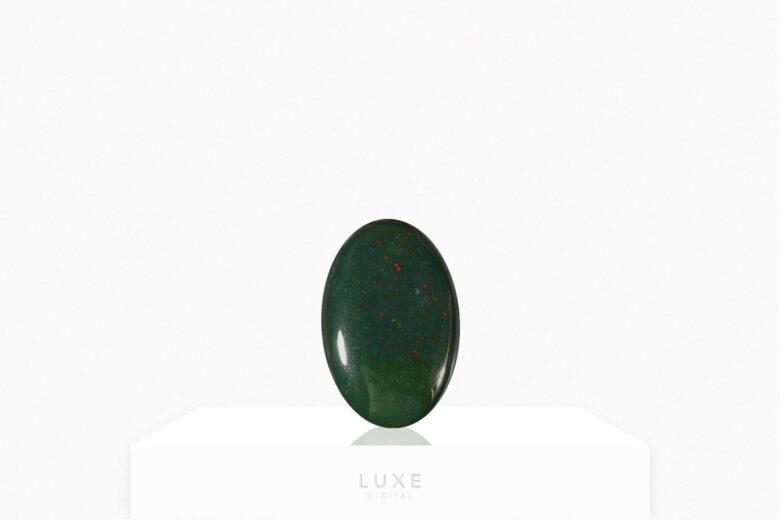
Bloodstone is one of the most whimsical green gemstones on this list. Despite having blood in its name, bloodstone is primarily deep green, with blood red hematite inclusions. Those spectacular inclusions may be splotchy or vein-like. It, too, is a form of quartz and can be translucent or opaque. Bloodstone is found mostly in India, Madagascar and California.
Benefits and Use
Bloodstone was once used in ancient civilizations to create jewelry, statues, and as a signet sealer. Today it’s used to remove mental and emotional blockages, as well as in a wide range of casual men’s and women’s jewelry.
| Mohs Hardness Score: | 6.5 to 7; suitable for casual wear. |
| Price: | $ |
Chrome Diopside
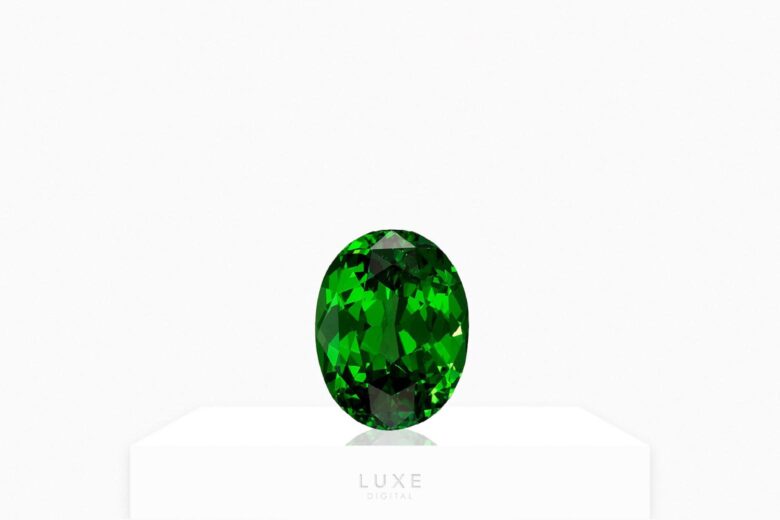
Chrome diopside (also known as chrome sphere) certainly isn’t the most well known green gemstone on this list, but it is stunning. This rare green gemstone is a translucent type of magnesium silicate. While inclusions can present as black or violet, chrome diopside is naturally velvety green. Depending on how it’s faceted, it may display lighter to deeper tones across the stone—all due to abundant chromium deposits. Chrome diopside is mined in Eastern Siberia.
Benefits and Use
Chrome diopside enhances learning, love, and loyalty. Its beauty makes it appealing for cocktail rings and faceted necklaces. Some of the most well-known and best jewelry designers, such as David Yurman, add chrome diopside as stylish accents to dangle bracelets.
| Mohs Hardness Score: | 5.5 to 6.5; suitable for collecting, but too soft for daily wear. |
| Price: | $$ |
Chrysocolla
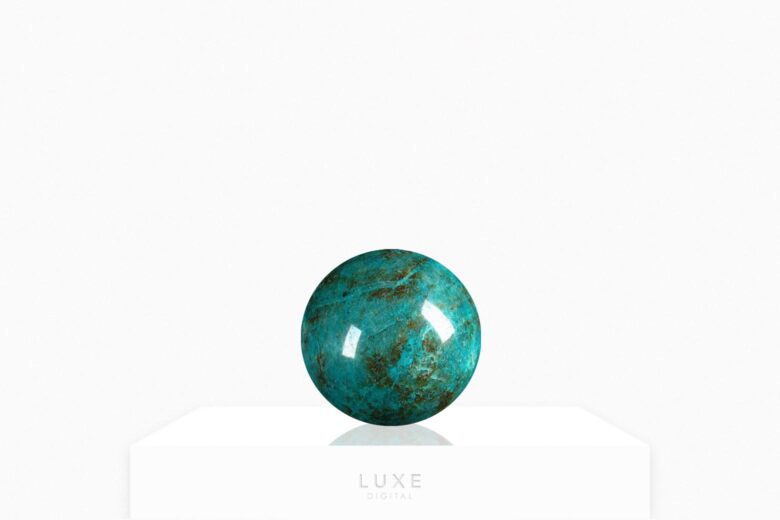
Chrysocolla is a beautiful green gem for anyone who loves the look of turquoise. With sea green hues and a marbled appearance, its sky blue, green, and other hues are nothing short of dreamy. This phyllosilicate mineral is composed of azurite, quartz, curprire, limonite and malachite and is found in the United States, Chile, Australia, France, England and Zania.
Benefits and Use
Chrysocolla is a green gemstone of transformation. It enhances communication, learning and love. Indigenous nations have used it for healing emotions and supporting the immune system.
| Mohs Hardness Score: | 2.5 to 3.5; suitable for healing beads. |
| Price: | $ |
Chrysoprase
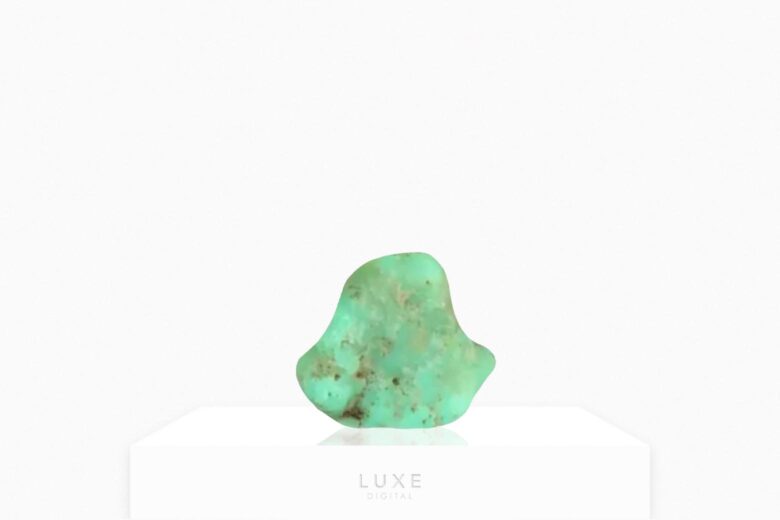
Chrysoprase gemstones hold meaning for those who find hope in Spring. From apple-green to aquamarine and yellow-green, this gemstone is vivid, sometimes with deposits of copper that provide a moss hue that has sometimes been mistaken for jade. Chrysoprase comes from the mines of Queensland, Australia and is an unusual form of quartz.
Benefits and Use
The finest chrysoprase is crafted into elegant cocktail rings and pendants. As healing crystals, chrysoprase is used to bring prosperity, fortune and happiness.
| Mohs Hardness Score: | 7; suitable for occasional wear. |
| Price: | $$ |
Ekanite
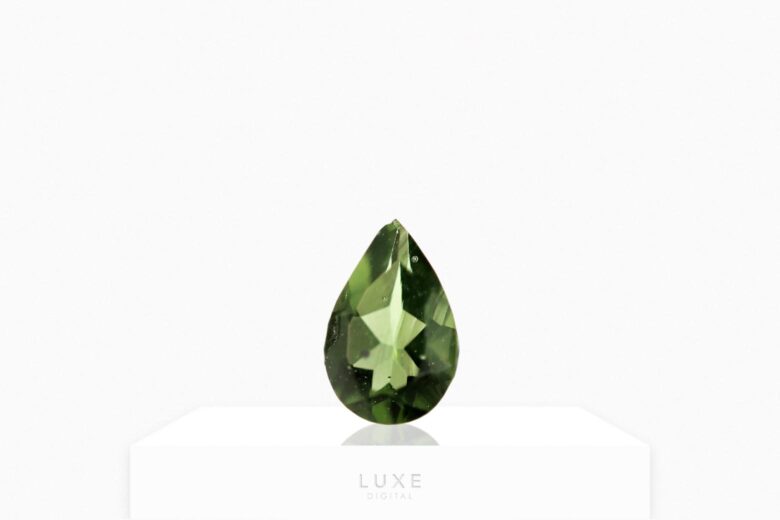
Ekanite is one of the newest in terms of green gemstone identification. Discovered in the 1950’s within Sri Lanka, ekanite is still mostly mined in Sri Lanka, with modest deposits in Russia and parts of North America. This rare green gem is a radioactive silicate mineral, composed of uranium and thorium. It’s mostly pale green to medium green, though it can also be yellow-green or even red. Its chatoyancy, or cat’s eye effect, results in bands of shimmering light across its surface.
Benefits and Use
Due to its radioactive properties, ekanite is believed to be connected to spiritual and cosmic realms.
| Mohs Hardness Score: | 4.5 to 5.0; suitable for collecting. |
| Price: | $ to $$ |
Emerald
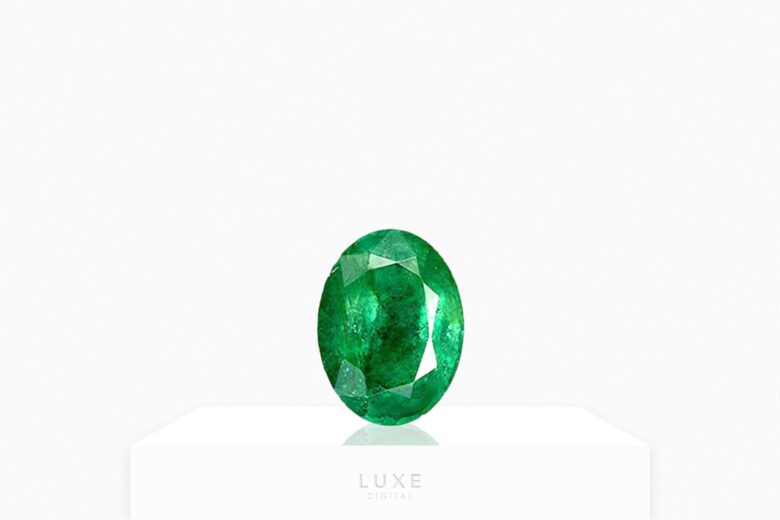
The most popular green gemstone on this list, emeralds hardly need an introduction. It’s one of the most valuable gemstones, holds special meaning as May’s most popular birthstone, and steeped in history and lore across cultures—no wonder it’s one of the favorite gems for colored engagement rings. A member of the beryl family, emeralds range from yellowish-green (Brazilian) to coveted bluish-green (Columbian or Zambian) and medium to sage green (Trapiche). The most valuable emeralds have saturated green hues with blue undertones and come from Columbia.
Benefits and Use
Emeralds are prized for birthstone jewelry, fine jewelry, and collecting. They’re used as signs of good luck and fortune and have been associated with wisdom.
| Mohs Hardness Score: | 7.5 to 8; suitable for fine jewelry. |
| Price: | $$$ |
Gaspeite
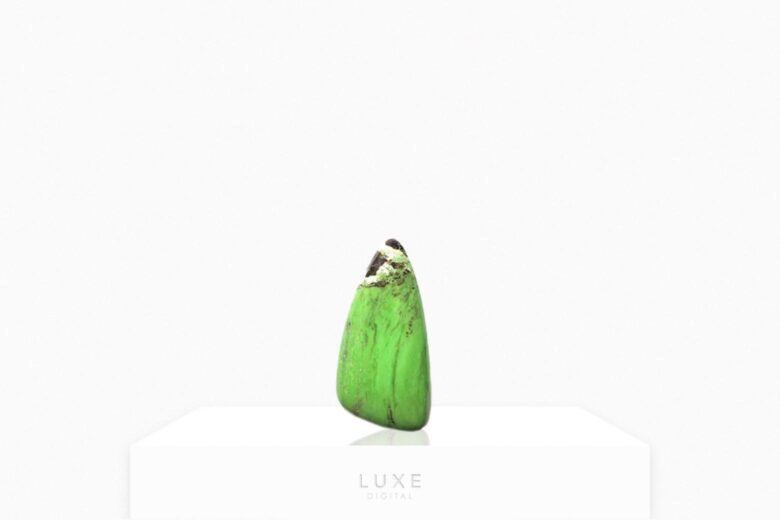
Gaspeite is a rare form of nickel carbonate found within Quebec. Newly identified in 1966, gaspeite doesn’t have a long history like many green gemstones. Its yellowish green to vibrant green, accented with vein-like brown inclusions and mottling. It’s dull to vitreous, sometimes with streaks of white.
Benefits and Use
These green gemstones are meaningful to Aboriginal people in Australia. They’ve been used to accelerate weight loss and support the heart.
| Mohs Hardness Score: | 4.5 to 5; suitable for healing. |
| Price: | $ |
Green Amethyst
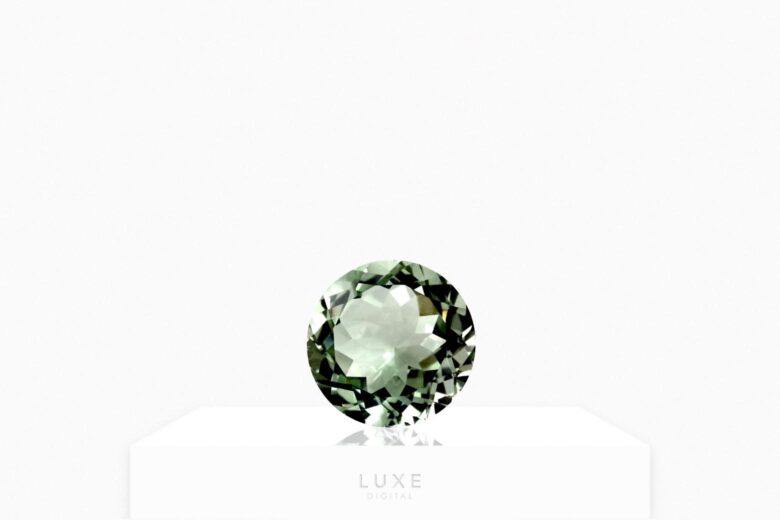
Green amethyst may not be as popular as lavender amethyst, but it’s beautiful in its own right. It’s translucent, with a pale green hue and contains citrine crystals. Iron compounds are attributed to its unique green hue, and some of its properties can be attributed to its membership in the quartz family. Most naturally occurring green amethyst is sourced from Brazil.
Benefits and Use
Green amethyst is used for gemstone jewelry, though most on the market is artificially heat-treated. It’s useful for supporting meditation and emotional and spiritual healing.
| Mohs Hardness Score: | 7; suitable for occasion jewelry. |
| Price: | $ to $$ |
Green Apatite
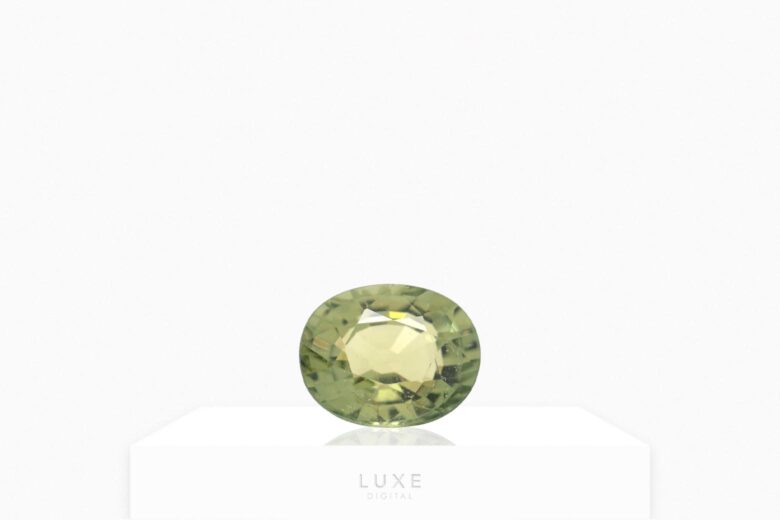
Green apatite is known as the ‘asparagus stone’ or even a chameleon gem. A member of the phosphate family, green apatite has traces of chlorine and fluorine and exhibits a vitreous luster with hexagonal or tubular prisms. This light to pale green gemstone is found in Mexico, Brazil and Myanmar.
Benefits and Use
Green apatite has dual action properties. This allows the wearer to dispel tumultuous thoughts and enhance spiritual and emotional clarity.
| Mohs Hardness Score: | 5; suitable for collecting. |
| Price: | $ |
Green Chrysoberyl
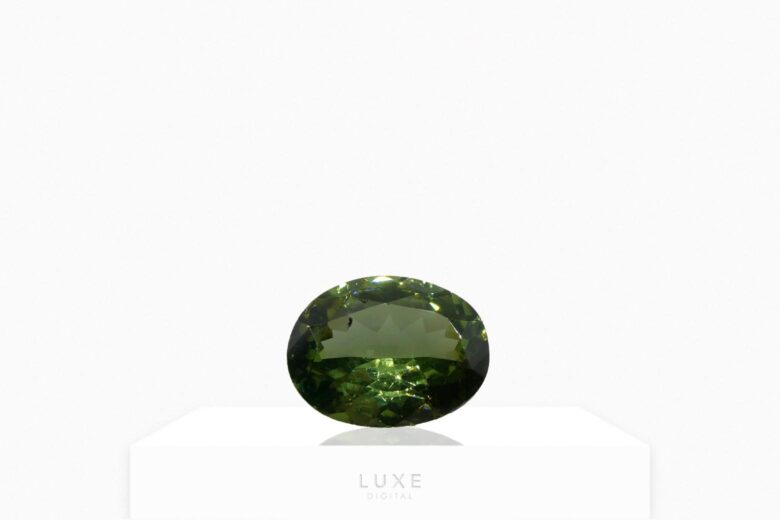
Green chrysoberyl forms in twinned or star crystals, and is yellow green to medium green. Its chatoyant effect creates bands of light across this transparent green gemstone. It’s a form of beryllium that is sourced from Sri Lanka and Brazil. A mint green variety comes from Tanzania.
Benefits and Use
Due to its rarity, green chrysoberyl is most coveted by collectors. In Asian culture, it’s thought to protect against the Evil Eye.
| Mohs Hardness Score: | 8.5; usually reserved for collecting. |
| Price: | $$$ |
Green Diamond
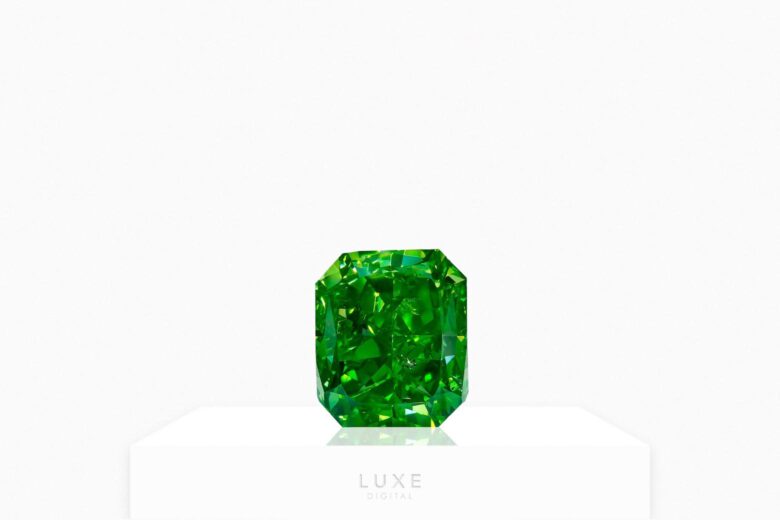
While colorless diamonds are prized for their beauty, green diamonds are some of the most expensive diamonds you can buy. Radiation under Earth’s crust exposes diamonds to uranium and results in an elegant icy to deep green hue. Green diamonds otherwise share all characteristics of white and colorless diamonds. They are, however, quite rare and are mined in South America, Brazil, and Venezuela.
Benefits and Use
Green diamonds are prized by collectors and used for fine jewelry. They are likewise symbols of strength, longevity, and abundance.
| Mohs Hardness Score: | 10; suitable for engagement rings, fine jewelry. |
| Price: | $$$ |
Green Garnet
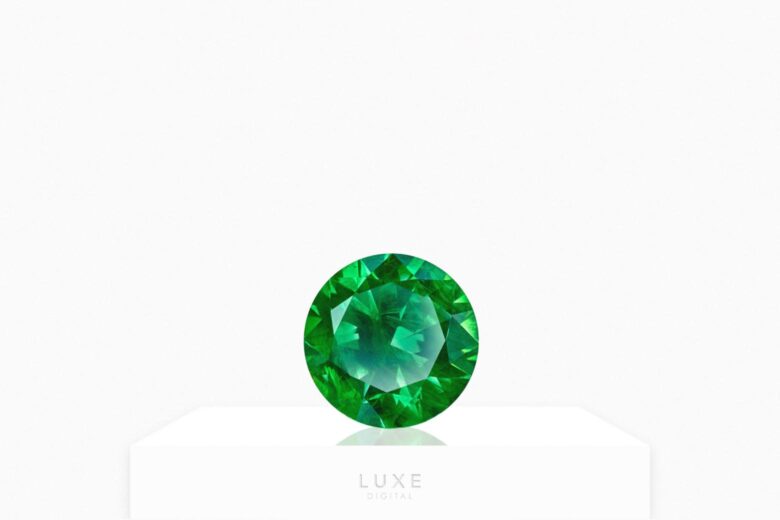
Green garnet is a member of the silicate family, and though red garnet is better known, it’s still the birthstone for January. From opaque to transparent, green garnet exhibits yellow and green inclusions, with a medium green to blue-green body. Green garnet comes from both Kenya and Madagascar.
Benefits and Use
Green garnet is used for everything from bracelets to brooches, pendant necklaces and even celebrating an anniversary—though less commonly than red garnet. It’s also used to improve energy and awareness.
| Mohs Hardness Score: | 6.5 to 7; suitable for collecting, occasion jewelry. |
| Price: | $$ |
Green Sapphire
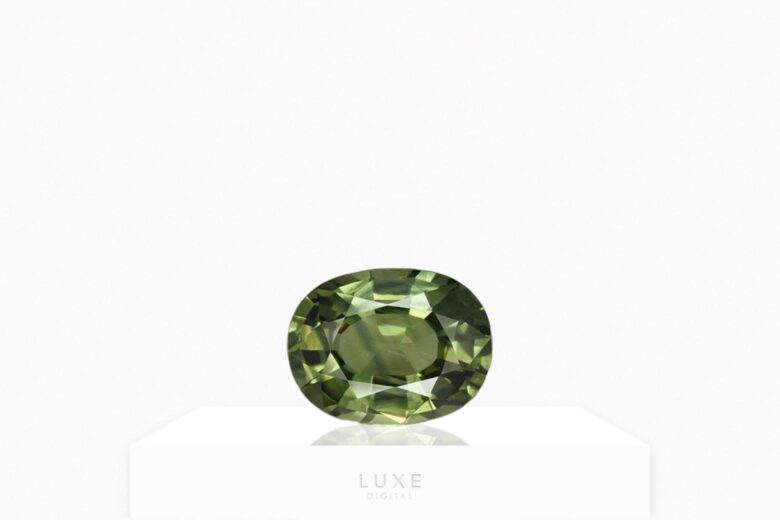
Green sapphires may be yellow-green, olive green, or medium green. Undertones of pale or yellowish-green are not uncommon, and even tints of blue are possible. Green sapphires nonetheless are far more rare than popular blue sapphires. They are mined in Sri Lanka, Tanzania, Australia, Madagascar, and Montana.
Benefits and Use
Green sapphires are ideal for formal and gemstone jewelry, with their excellent faceting, beauty and durability. They also heal emotions.
| Mohs Hardness Score: | 9; suitable for everyday wear, collecting. |
| Price: | $$$ |
Green Zircon
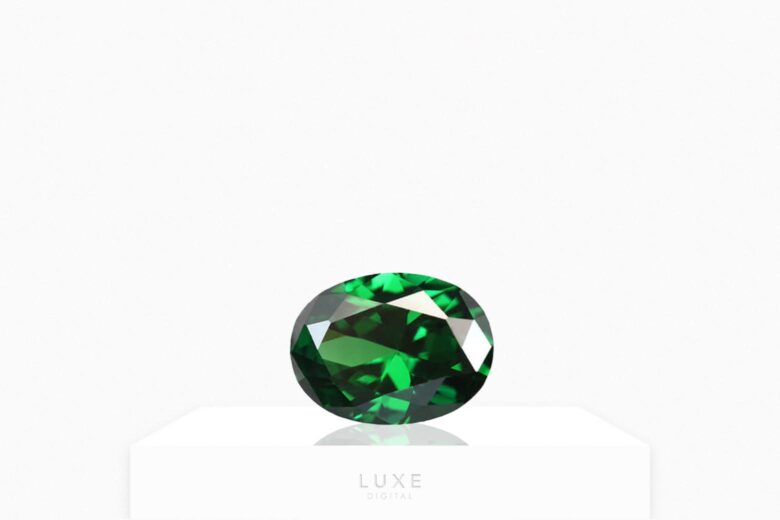
Green zircon is a beautiful pure to olive green gemstone, whose color may darken over time. The green hue identifies its radioactive deposits and separates it from other types of zircon. Green zircon is usually found in round pebbles in Madagascar and Zambia. Many natural green zircon gemstones must be heat-treated to improve a naturally cloudy appearance.
Benefits and Use
Zircon is used for sand casting and mold coating, though green zircon is more commonly used for collecting and healing. Green zircon aids meditation and brings prosperity.
| Mohs Hardness Score: | 6 to 7.5; suitable for collecting, occasional wear. |
| Price: | $$ |
Hiddenite
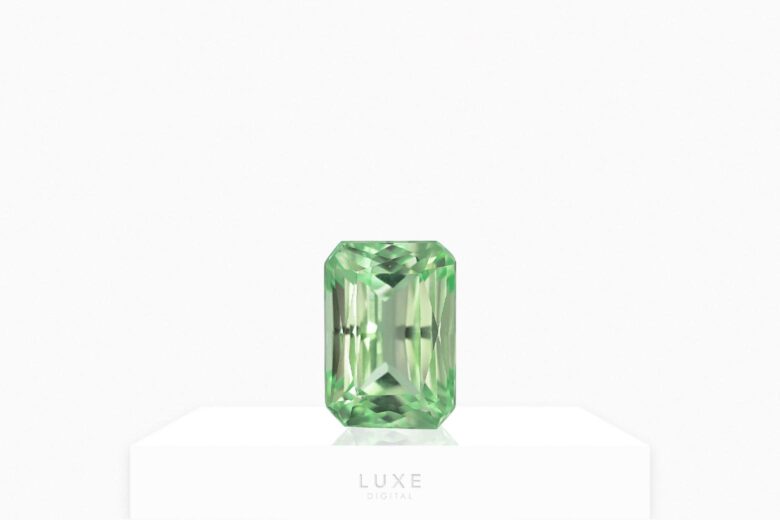
Hiddenite is a light green to emerald green form of spodumene. Its multidimensional green hues may even have tints of mint or yellow-green. Hiddenite is not only a rare green gemstone on this list, but the fourth rarest gemstone in the world. It’s only ever been found in Charlotte, North Carolina.
Benefits and Use
Hiddenite is exceptionally rare, and thus used for collecting. It’s also believed to aid in addiction recovery.
| Mohs Hardness Score: | 5.5; suitable for collecting. |
| Price: | $ |
Idocrase
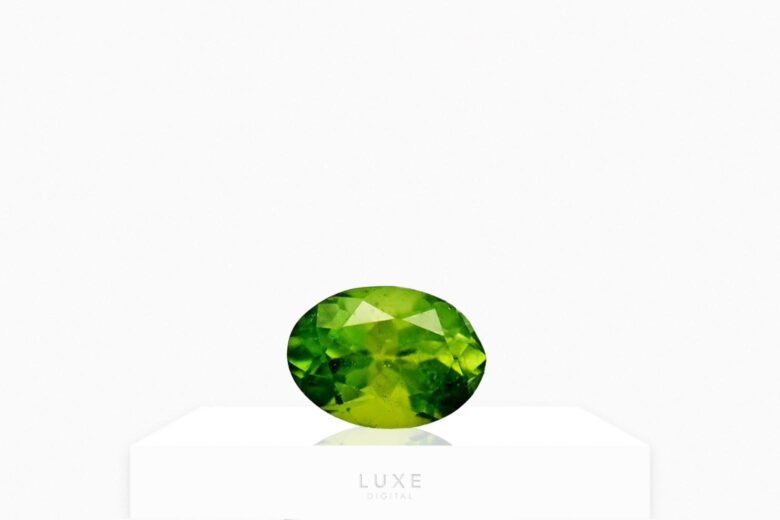
Idocrase, or vesuvianite, shares the same crystal structure as garnet and likewise contains silicate. Its crystals contain deposits of limestone, which contribute to a muddy green to medium green hue. It’s often compared to lower quality jade and has a dull appearance. Idocrase is found near Mount Vesuvius in Italy.
Benefits and Use
Idocrase is a healing green gemstone, used to alleviate negative emotions, like anger and hopelessness.
| Mohs Hardness Score: | 6.5; suitable for collecting, crystal healing. |
| Price: | $ |
Jade
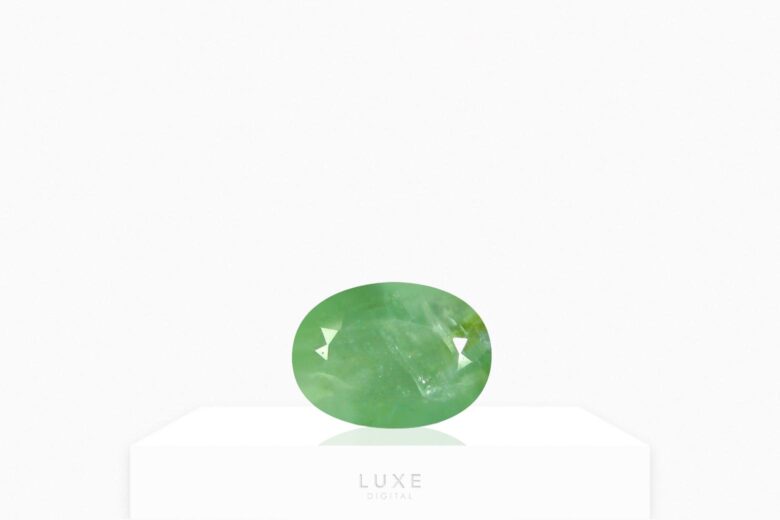
Jade is one of the most popular green gemstones, jade has been prized in Asian countries for centuries. Jade includes both nephrite and jadeite and may also be white, yellow or lavender. But green jade is the most sought after, especially: imperial jade, apple green jade, kingfisher jade and moss jade. Jade is sourced around the world, especially within Myanmar, New Zealand, Canada, Russia, China, and Taiwan.
Benefits and Use
Jade is a grounding stone, used to heal, bestow luck, and optimize relationships. It’s been widely used for jewelry, ornaments, artwork, and even tools and weapons.
| Mohs Hardness Score: | 6.5 to 7; suitable for gentle wear, ornaments |
| Price: | $ to $$$ (Imperial) |
Kornerupine
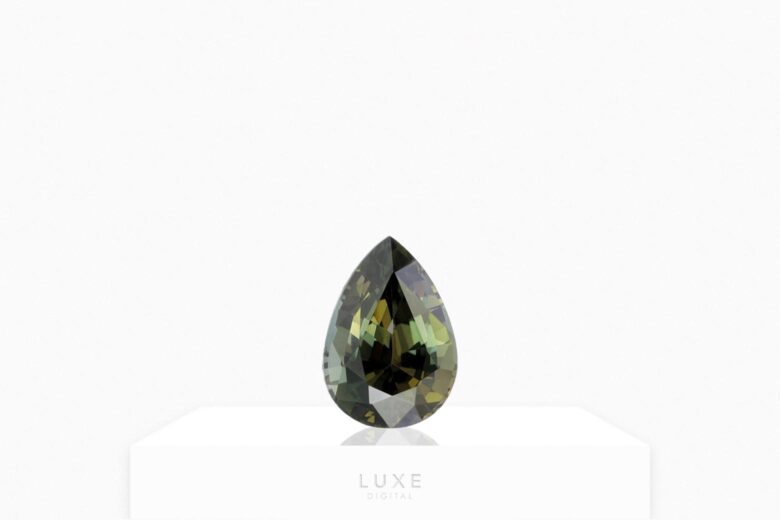
Kornerupine is not usually considered an attractive green gemstone, due to its muddy brown and green colors. It’s usually dull, but light green kornerupine is an exception. This type of kornerupine ranges from medium light to icy green and also is more suitable for faceting and may even exhibit a cat’s eye effect. Kornerupine is a rare boro silicate mineral, sourced from Tanzania, Kenya, Madagascar, and Sri Lanka.
Benefits and Use
Kornerupine clarifies the mind, improves focus, and enhances teaching. Kenyan kornerupine is faceted for collecting.
| Mohs Hardness Score: | 6.5 to 7; suitable for collecting, unique jewelry. |
| Price: | $ to $$ |
Malachite
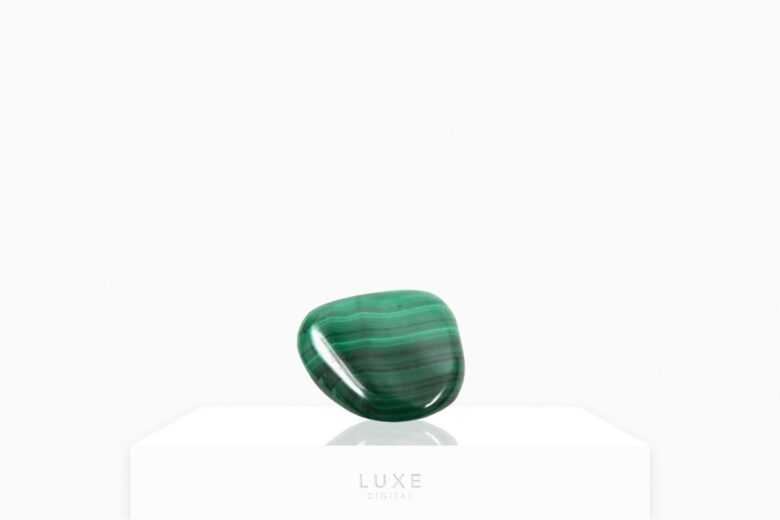
Malachite is a luxurious gemstone, prized for its deep-green, marble-like swirls. This unique pattern exhibits medium, light and majestic Everest green hues that have been loved even among royalty. Malachite is a form of carbonate with a silky luster. Much of this green gemstone comes from the Ural Mountains, but it’s also found in Israel, Namibia, and the Democratic Republic of Congo.
Benefits and Use
Malachite is a beautiful green gemstone for earrings, pendants, and even cocktail rings. Cabochon cuts are common and enhance its beauty. It’s also used as a protective stone against toxic energy and emotions.
| Mohs Hardness Score: | 3.5 to 4; despite its beauty, malachite must be worn very carefully and is not suitable for every day. |
| Price: | $ to $$ |
Maw Sit Sit
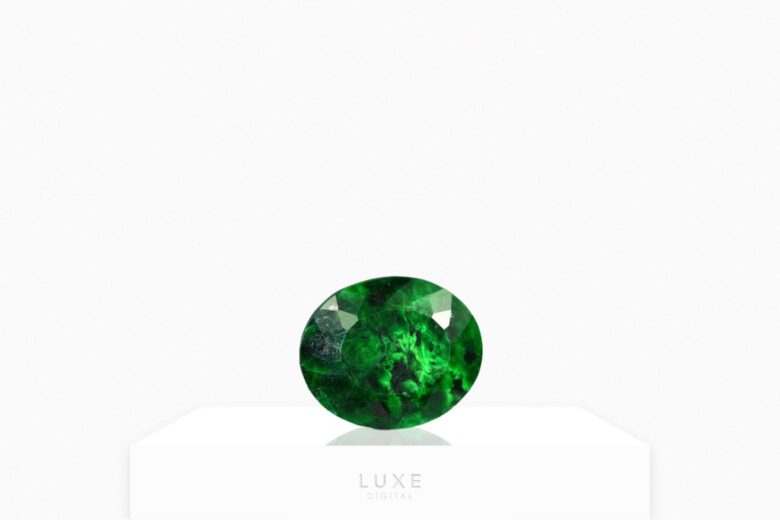
Maw Sit Sit is a unique green gemstone that is also identified as jade-albite. While it’s understandably mistaken for jade, it’s actually a rock, composed of kosmochlor, feldspar, and varieties of jadeite. Noteworthy for its deep green body and black veins, it can only be found in Burma.
Benefits and Use
Maw Sit Sit calms emotions, sharpens the mind and revitalizes. It’s used for both healing and collecting.
| Mohs Hardness Score: | 6 to 7; suitable for collecting, crystal healing. |
| Price: | $ to $$ |
Moldavite
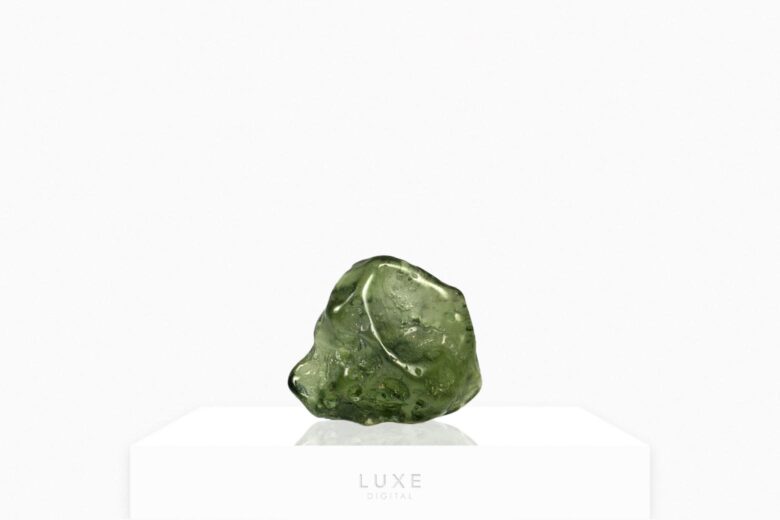
Moldavite is a form of tektite, with a olive-green, bluish-green or deep green hue. This unique green gemstone contains vitreous silica and is believed to have formed from a meteorite strike. Moldavite comes from the Czech Republic, Prague, and Germany.
Benefits and Use
Its amorphous crystalline structure means it is used as a rough stone, both healing crystals and unique pendants. It’s used to heal negative emotions from one’s past.
| Mohs Hardness Score: | 5.5 to 7; suitable for collecting. |
| Price: | $ |
Peridot
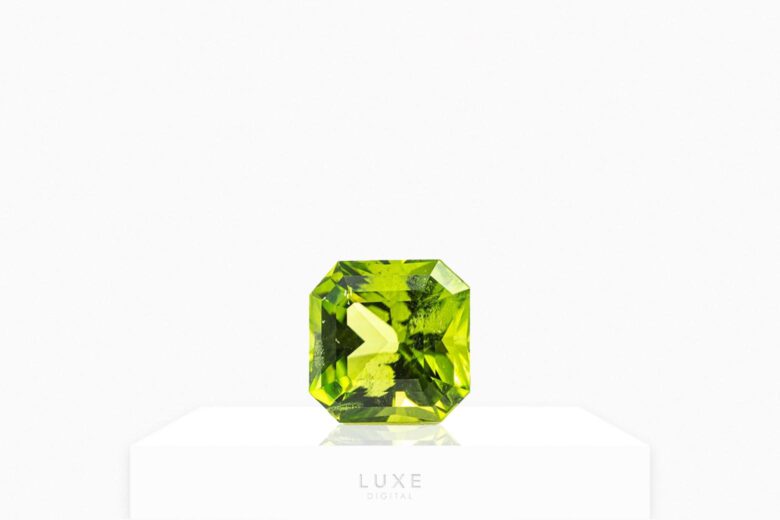
Peridot earns its nickname: emerald by night. Its dazzling brilliance and verdant shades of green glow and never fade, no matter the time of day. A member of the olivine mineral class, peridot is not only August’s birthstone, but also enchanting with its range of lime green and golden undertones. Peridot comes from China, Pakistan, Myanmar, Egypt, and other places around the world.
Benefits and Use
Peridot is used for a range of birthstone jewelry, from rings to earrings and necklaces. Its spiritual meaning is tied to compassion and decreasing negative emotions like jealousy.
| Mohs Hardness Score: | 6.5 to 7; suitable for collecting, occasional wear, birthstone pieces, but can become scratched with daily wear. |
| Price: | $ to $$ |
Prehnite
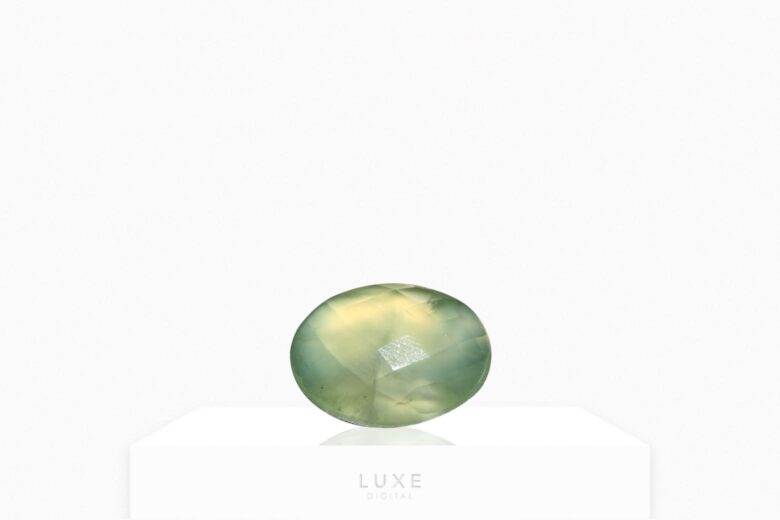
Prehnite, known as the stone of dreaming, is a mystical form of green calcium aluminosilicate. It ranges from pea green to pale green, sometimes with white undertones. Its muted, soft hue is mostly cloudy, with varying shades. Prehnite is found in Italy, the United States, France, and Scotland.
Benefits and Use
Prehnite promotes lucid dreaming and allows the user to tap into their subconscious. Indigeous people of South Africa call it a stone of prophecy.
| Mohs Hardness Score: | 6 to 6.5; suitable for collecting, light wear. |
| Price: | $ |
Seraphinite
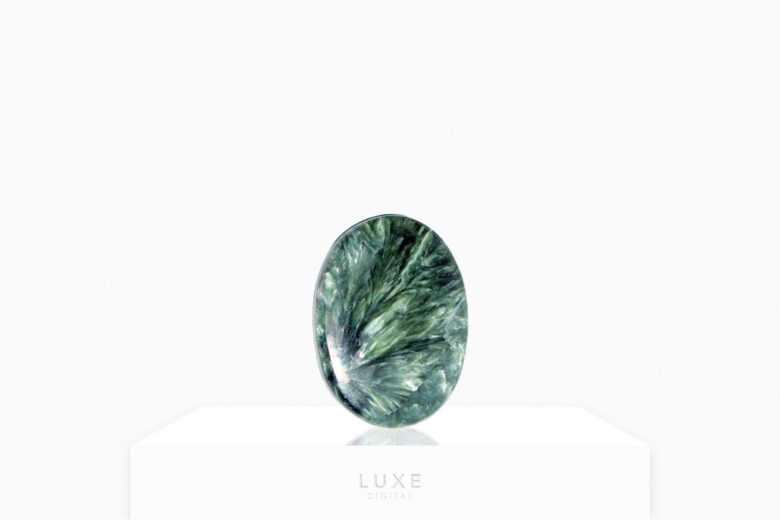
Seraphinite is a type of clinochlore mined in Eastern Siberia. Among the rarer green gemstones on this list, seraphinite is mined in a single location. Nonetheless, it’s captivating, with a dark green body and feathery, silver and ivory inclusions.
Benefits and Use
Seraphinite is mostly used for healing. It balances chakras, soothes the heart, and disrupts unhealthy patterns.
| Mohs Hardness Score: | 2 to 4; suitable for collecting. |
| Price: | $ |
Serpentine
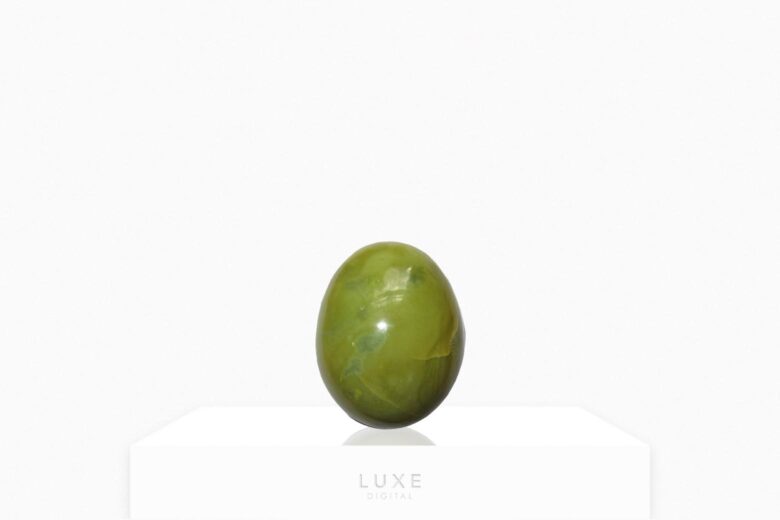
Serpentine contains both magnesium and asbestos. Identification is made based on this green gemstone’s greenish-brownish, spotted appearance and unique composition. The muddy colors and greasy to waxy luster remind many of a serpent. Serpentine is sourced from the Ural Mountains, New Zealand, France, Italy, the US and Greece.
Benefits and Use
Serpentine is a meditation stone with mild-clarifying properties. It’s historically been used for ornamental purposes, as well as architecture.
| Mohs Hardness Score: | 2.5 to 5.5; suitable for collecting. |
| Price: | $ |
Sunstone
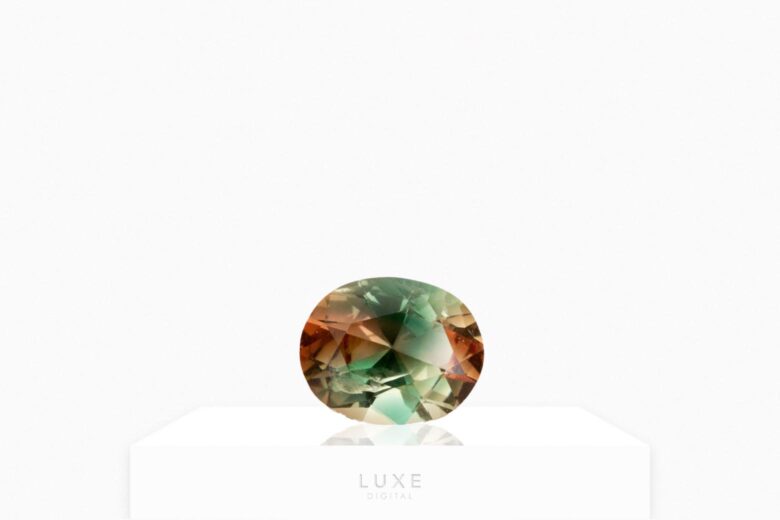
Sunstone is usually red, pink, orange or brown yet unique green varieties exist. In fact, red and green sunstone are the most valuable. Green sunstone is from the feldspar group and features exquisite aventurescence (an optical reflective property). It’s found in Norway, Sweden, Southern Australia, and parts of the United States.
Benefits and Use
Green sunstone—and all types of suntone—aligns and energizes the chakras. It’s used to bring fortune, luck and happiness.
| Mohs Hardness Score: | 6.5 to 7; suitable for collecting. |
| Price: | $ |
Tourmaline- Verdelite, Chrome and Watermelon

Tourmaline is one of the most popular green gemstones-—though it comes in many forms. Watermelon tourmaline features a vibrant green exterior with a pink exterior, while green tourmaline (chrome) features a deeper green hue. Other colors of tourmaline range from black to canary yellow, but all forms of tourmaline have a beautiful, vitreous luster. Green and water tourism come from Brazil, Nigeria, Mozambique, Pakistan, Afghanistan and the U.S.
Benefits and Use
Tourmaline is used for birthstone (October) jewelry and fine jewelry of all kinds. It’s also used to inspire creativity.
| Mohs Hardness Score: | 7 to 7.5; suitable for birthstone jewelry. |
| Price: | $ to $$$ |
Tsavorite
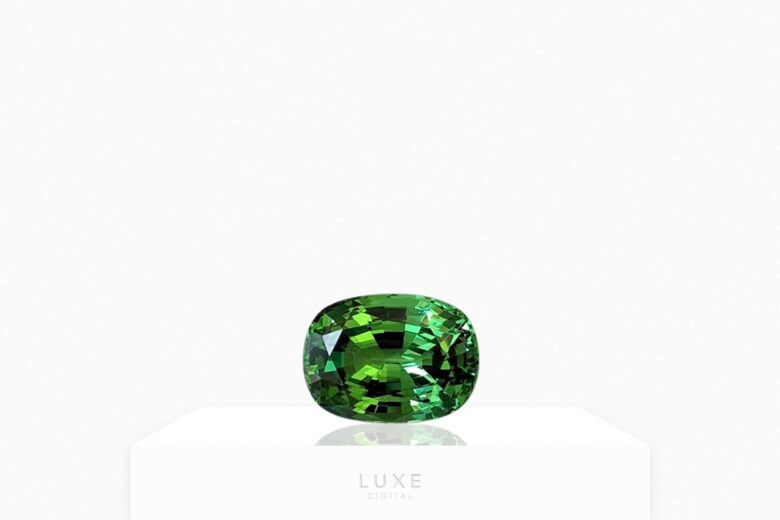
Tsavorite is a form of garnet, identified by its calcium and aluminum-based composition. This majestic gemstone is a splendid, medium to deep emerald green with the potential for excellent clarity and faceting. It’s found in Tanzania and Madagascar and was famously lauded by the founder of Tiffany and Co.
Benefits and Use
The beauty of tsavorite makes it ideal as a more affordable (though 200 times rarer) alternative to an emerald. It’s fashioned into rings, earrings, and other fine jewelry. It’s also used to recover from physical and emotional trauma.
| Mohs Hardness Score: | 7 to 7.5; suitable for fine jewelry. |
| Price: | $$ |
Turquoise
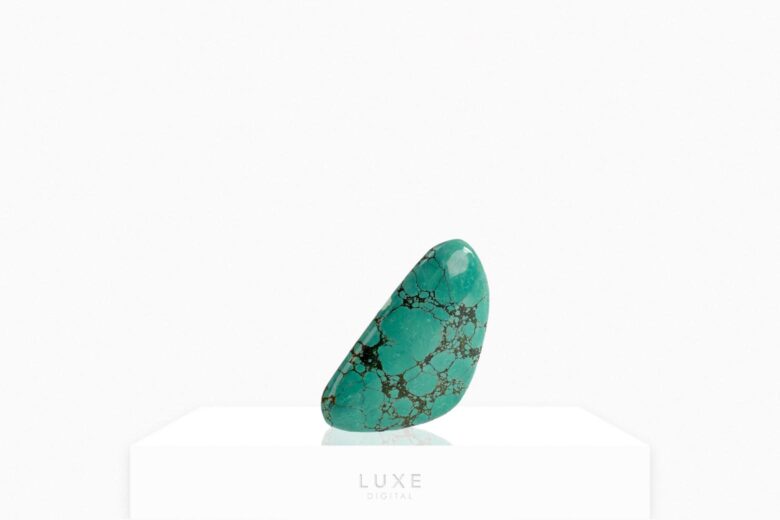
Turquoise is also classified as a blue gemstone: its signature bluish-green to greenish-blue hue, after all, is how it got its name. Turquoise however, does have a range of hues, from sea blue to medium green- all marked with a matrix of dark inclusions. This whimsical gem is a member of the phosphate family and comes from Mediterranean regions and the United States.
Benefits and Use
Turquoise is popularly fashioned into beaded jewelry and is one of December’s birthstones. It’s also useful for bestowing luck and eliminating negative thoughts.
| Mohs Hardness Score: | 5 to 6; suitable for occasional wear. |
| Price: | $ to $$$ |
Variscite
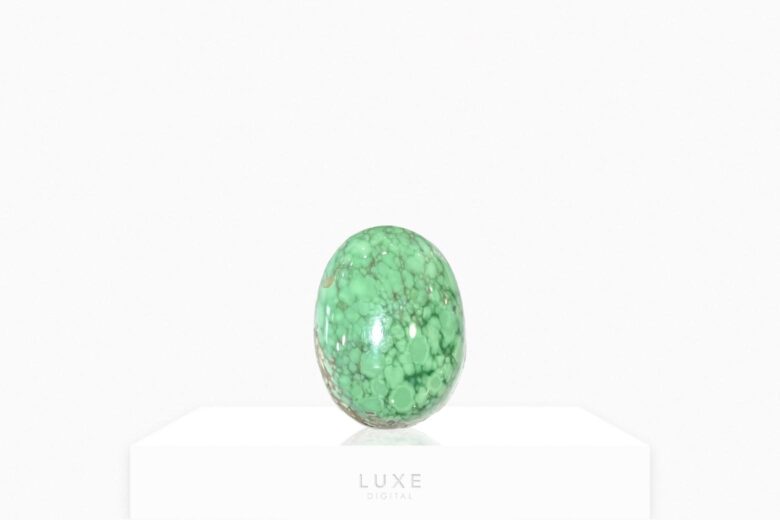
Variscite is a type of hydrated aluminum phosphate, identified by traces of chromium and white vein-like inclusions. Though sometimes mistaken for turquoise, it has less blue undertones and a more distinct medium green hue. Variscite is found in Germany, Austria, Australia, Czech Republic and the Congo.
Benefits and Use
Variscite is used for making ornamental decorations, and sometimes as a direct alternative to turquoise. It also enhances intellectual thought and decision making.
| Mohs Hardness Score: | 3.5 to 5; suitable for collecting, but poor wearability. |
| Price: | $ to $$ |
Zoisite
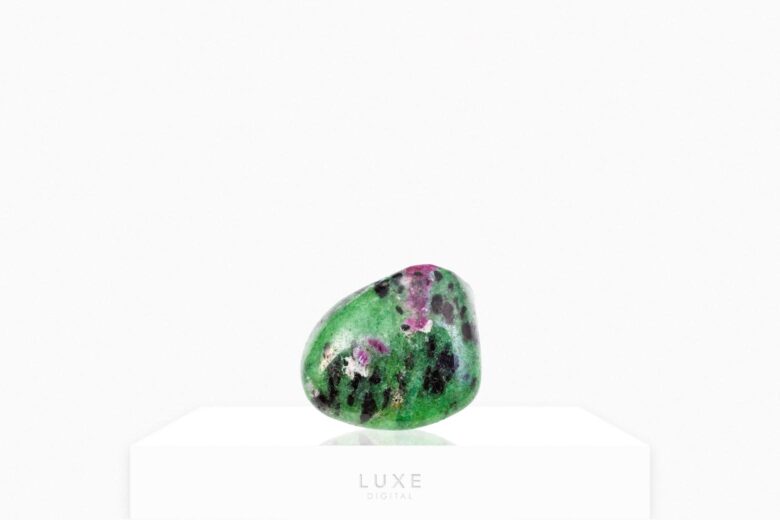
Zoisite rounds out our list of green gemstones. Also known as saulapite, it’s in the epidote mineral group. It may also be pink, gray or lavender, but even its light green hue is usually heat-treated for a more saturated color. Black, scattered veins are common. Its surface ranges from vitreous to pearly. Green zoisite comes from Tanzania.
Benefits and Use
Zoisite aligns the heart chakra and removes emotional blockages. It is a green gemstone of both optimism and enthusiasm.
| Mohs Hardness Score: | 6 to 7; suitable for casual beaded bracelets, collecting. |
| Price: | $ |
Frequently Asked questions about green gemstones
There are over 30 well-known green gemstones, but the most famous one is an emerald. Types of emeralds include: Colombian emeralds, Cat’s Eye emeralds, Brazilian emeralds, and more. Other well-known green gemstones include jade, turquoise, peridot, and green diamonds. See our list of the best green gemstones for more inspiration.
Tsavorite is not only one of the rarest green gemstones, but also one of the rarest gemstones in the world. This semi-precious green gemstone is known for its enchanting light to forest green hues and beautiful faceting. It’s considered a good investment and highly desirable for both fine jewelers and avid collectors.
Green gemstones have many names, but the most popular one is the emerald. Emeralds are not only featured in fine jewelry, but also one of May’s birthstones. Known for their beauty, value, and durability, it’s no wonder that emeralds are the most popular green gemstone.
